Sebastian Bader
Activity Recognition in Assembly Tasks by Bayesian Filtering in Multi-Hypergraphs
Feb 01, 2022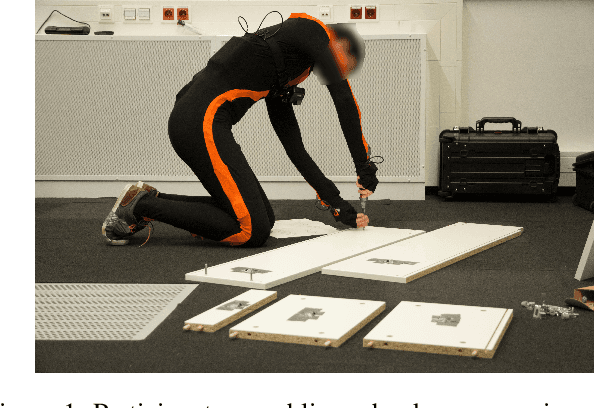


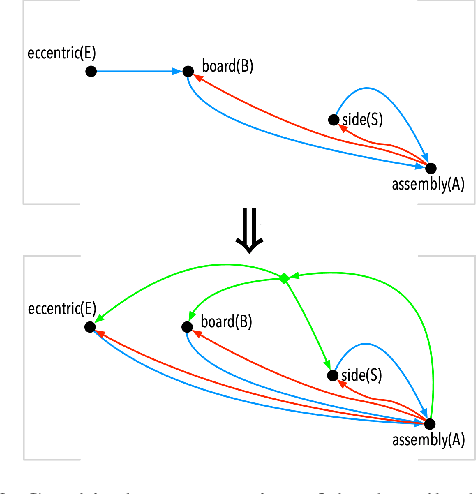
Abstract:We study sensor-based human activity recognition in manual work processes like assembly tasks. In such processes, the system states often have a rich structure, involving object properties and relations. Thus, estimating the hidden system state from sensor observations by recursive Bayesian filtering can be very challenging, due to the combinatorial explosion in the number of system states. To alleviate this problem, we propose an efficient Bayesian filtering model for such processes. In our approach, system states are represented by multi-hypergraphs, and the system dynamics is modeled by graph rewriting rules. We show a preliminary concept that allows to represent distributions over multi-hypergraphs more compactly than by full enumeration, and present an inference algorithm that works directly on this compact representation. We demonstrate the applicability of the algorithm on a real dataset.
SimDem A Multi-agent Simulation Environment to Model Persons with Dementia and their Assistance
Jul 12, 2021


Abstract:Developing artificial intelligence based assistive systems to aid Persons with Dementia (PwD) requires large amounts of training data. However, data collection poses ethical, legal, economic, and logistic issues. Synthetic data generation tools, in this regard, provide a potential solution. However, we believe that already available such tools do not adequately reflect cognitive deficiencies in behavior simulation. To counter these issues we propose a simulation model (SimDem ) that primarily focuses on cognitive impairments suffered by PwD and can be easily configured and adapted by the users to model and evaluate assistive solutions.
Improving 3D convolutional neural network comprehensibility via interactive visualization of relevance maps: Evaluation in Alzheimer's disease
Dec 18, 2020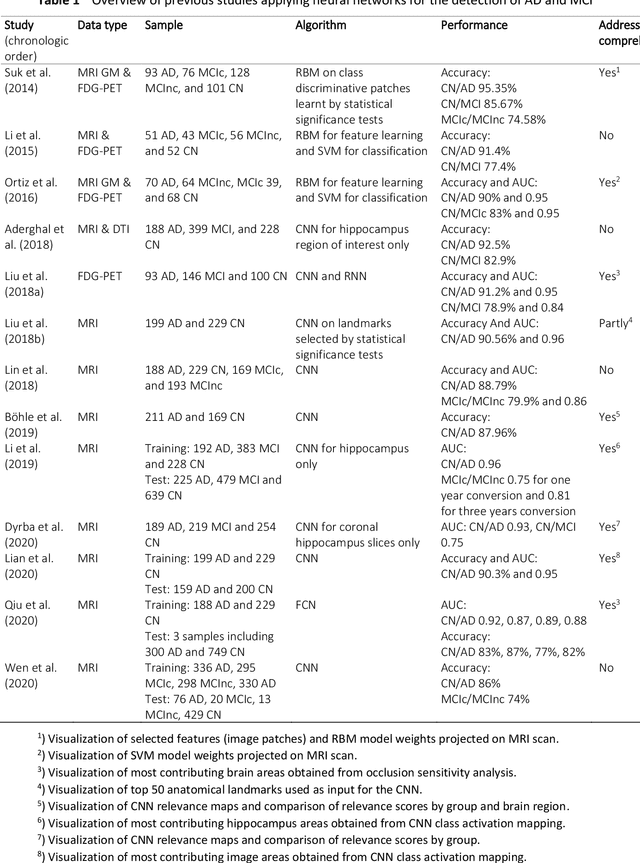

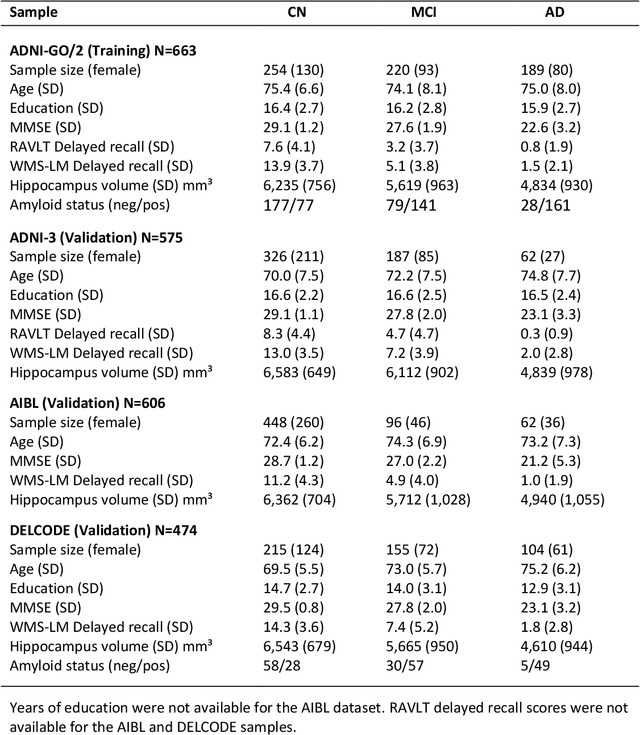
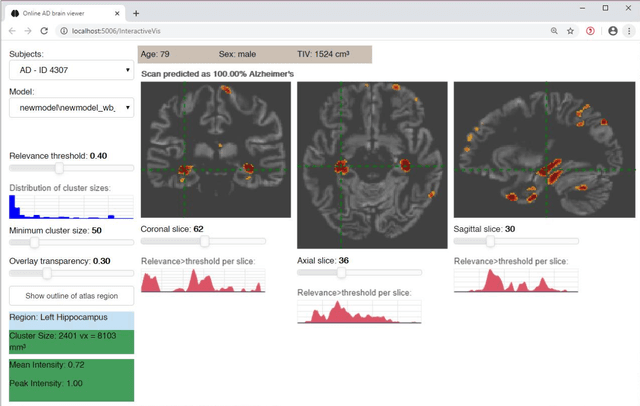
Abstract:Although convolutional neural networks (CNN) achieve high diagnostic accuracy for detecting Alzheimer's disease (AD) dementia based on magnetic resonance imaging (MRI) scans, they are not yet applied in clinical routine. One important reason for this is a lack of model comprehensibility. Recently developed visualization methods for deriving CNN relevance maps may help to fill this gap. We investigated whether models with higher accuracy also rely more on discriminative brain regions predefined by prior knowledge. We trained a CNN for the detection of AD in N=663 T1-weighted MRI scans of patients with dementia and amnestic mild cognitive impairment (MCI) and verified the accuracy of the models via cross-validation and in three independent samples including N=1655 cases. We evaluated the association of relevance scores and hippocampus volume to validate the clinical utility of this approach. To improve model comprehensibility, we implemented an interactive visualization of 3D CNN relevance maps. Across three independent datasets, group separation showed high accuracy for AD dementia vs. controls (AUC$\geq$0.92) and moderate accuracy for MCI vs. controls (AUC$\approx$0.75). Relevance maps indicated that hippocampal atrophy was considered as the most informative factor for AD detection, with additional contributions from atrophy in other cortical and subcortical regions. Relevance scores within the hippocampus were highly correlated with hippocampal volumes (Pearson's r$\approx$-0.81). The relevance maps highlighted atrophy in regions that we had hypothesized a priori. This strengthens the comprehensibility of the CNN models, which were trained in a purely data-driven manner based on the scans and diagnosis labels. The high hippocampus relevance scores and high performance achieved in independent samples support the validity of the CNN models in the detection of AD-related MRI abnormalities.
Lifted Filtering via Exchangeable Decomposition
May 07, 2018

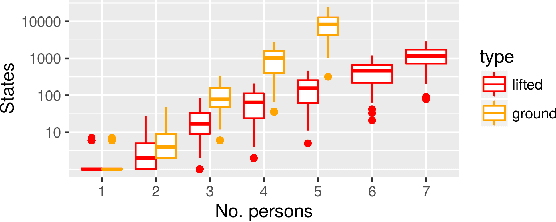
Abstract:We present a model for exact recursive Bayesian filtering based on lifted multiset states. Combining multisets with lifting makes it possible to simultaneously exploit multiple strategies for reducing inference complexity when compared to list-based grounded state representations. The core idea is to borrow the concept of Maximally Parallel Multiset Rewriting Systems and to enhance it by concepts from Rao-Blackwellization and Lifted Inference, giving a representation of state distributions that enables efficient inference. In worlds where the random variables that define the system state are exchangeable -- where the identity of entities does not matter -- it automatically uses a representation that abstracts from ordering (achieving an exponential reduction in complexity) -- and it automatically adapts when observations or system dynamics destroy exchangeability by breaking symmetry.
State-Space Abstractions for Probabilistic Inference: A Systematic Review
Apr 23, 2018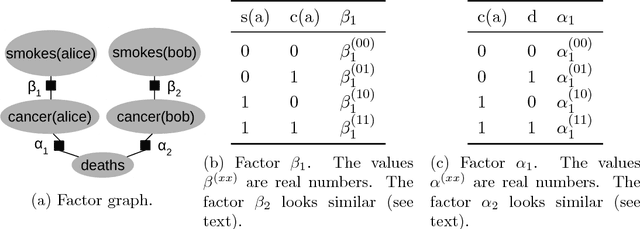
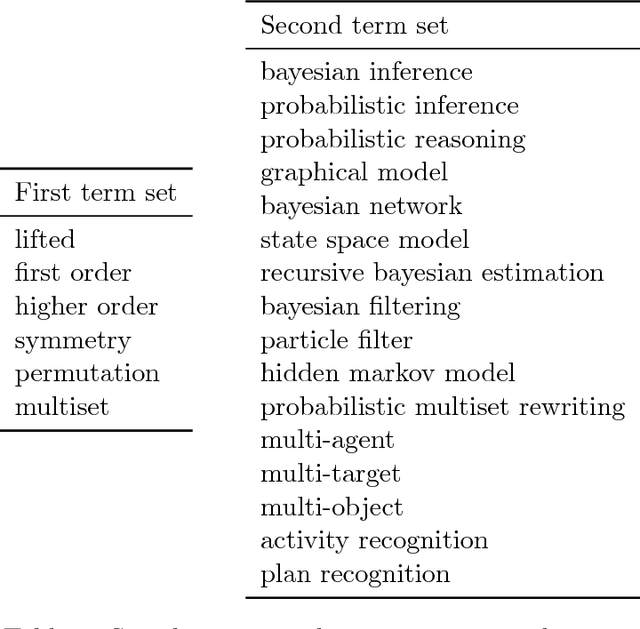

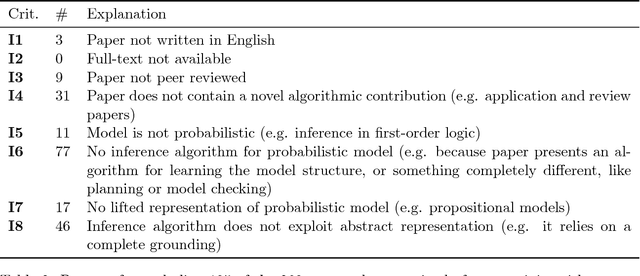
Abstract:Tasks such as social network analysis, human behavior recognition, or modeling biochemical reactions, can be solved elegantly by using the probabilistic inference framework. However, standard probabilistic inference algorithms work at a propositional level, and thus cannot capture the symmetries and redundancies that are present in these tasks. Algorithms that exploit those symmetries have been devised in different research fields, for example by the lifted inference-, multiple object tracking-, and modeling and simulation-communities. The common idea, that we call state space abstraction, is to perform inference over compact representations of sets of symmetric states. Although they are concerned with a similar topic, the relationship between these approaches has not been investigated systematically. This survey provides the following contributions. We perform a systematic literature review to outline the state of the art in probabilistic inference methods exploiting symmetries. From an initial set of more than 4,000 papers, we identify 116 relevant papers. Furthermore, we provide new high-level categories that classify the approaches, based on the problem classes the different approaches can solve. Researchers from different fields that are confronted with a state space explosion problem in a probabilistic system can use this classification to identify possible solutions. Finally, based on this conceptualization, we identify potentials for future research, as some relevant application domains are not addressed by current approaches.
Neural-Symbolic Learning and Reasoning: A Survey and Interpretation
Nov 10, 2017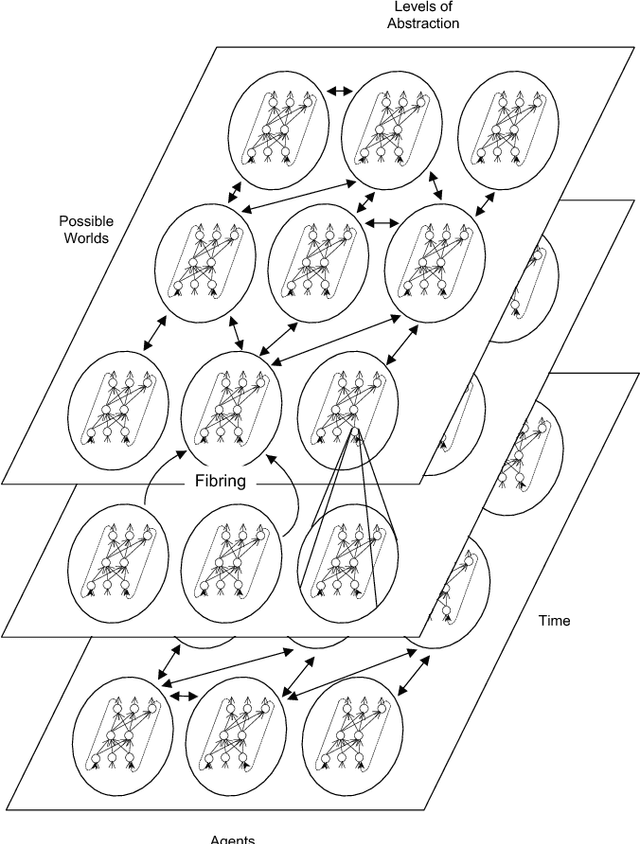
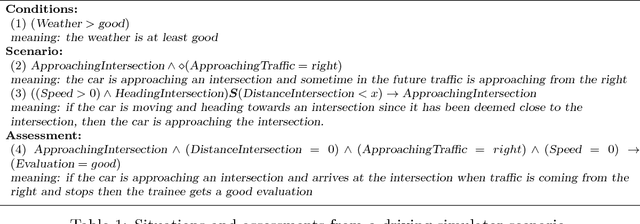
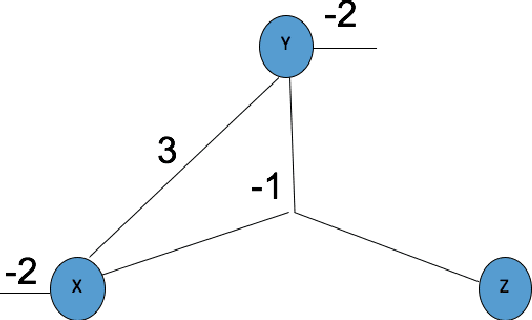
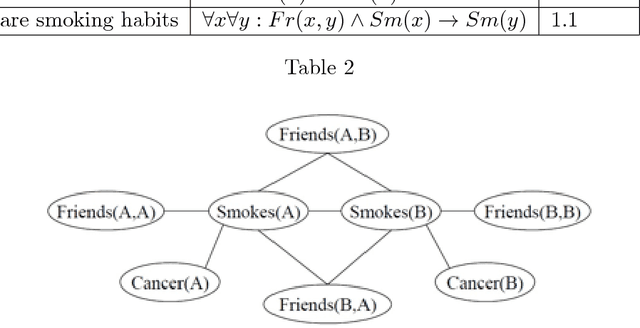
Abstract:The study and understanding of human behaviour is relevant to computer science, artificial intelligence, neural computation, cognitive science, philosophy, psychology, and several other areas. Presupposing cognition as basis of behaviour, among the most prominent tools in the modelling of behaviour are computational-logic systems, connectionist models of cognition, and models of uncertainty. Recent studies in cognitive science, artificial intelligence, and psychology have produced a number of cognitive models of reasoning, learning, and language that are underpinned by computation. In addition, efforts in computer science research have led to the development of cognitive computational systems integrating machine learning and automated reasoning. Such systems have shown promise in a range of applications, including computational biology, fault diagnosis, training and assessment in simulators, and software verification. This joint survey reviews the personal ideas and views of several researchers on neural-symbolic learning and reasoning. The article is organised in three parts: Firstly, we frame the scope and goals of neural-symbolic computation and have a look at the theoretical foundations. We then proceed to describe the realisations of neural-symbolic computation, systems, and applications. Finally we present the challenges facing the area and avenues for further research.
Sequential Lifted Bayesian Filtering in Multiset Rewriting Systems
Aug 14, 2017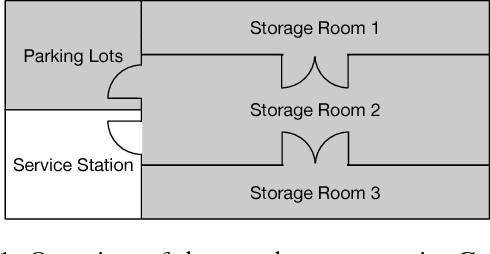

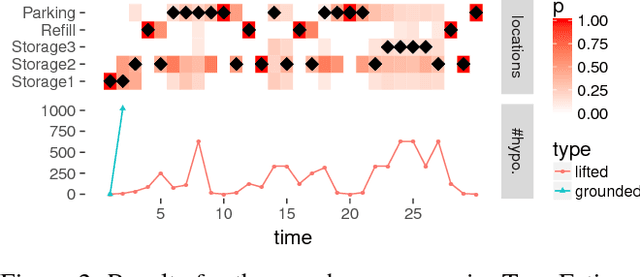
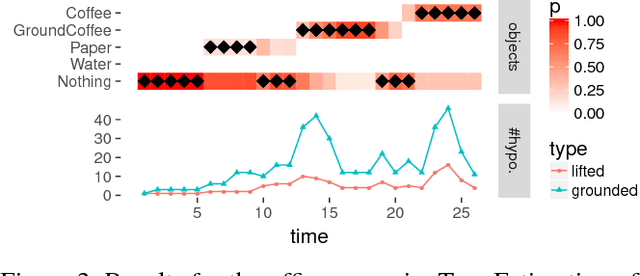
Abstract:Bayesian Filtering for plan and activity recognition is challenging for scenarios that contain many observation equivalent entities (i.e. entities that produce the same observations). This is due to the combinatorial explosion in the number of hypotheses that need to be tracked. However, this class of problems exhibits a certain symmetry that can be exploited for state space representation and inference. We analyze current state of the art methods and find that none of them completely fits the requirements arising in this problem class. We sketch a novel inference algorithm that provides a solution by incorporating concepts from Lifted Inference algorithms, Probabilistic Multiset Rewriting Systems, and Computational State Space Models. Two experiments confirm that this novel algorithm has the potential to perform efficient probabilistic inference on this problem class.
Dimensions of Neural-symbolic Integration - A Structured Survey
Nov 10, 2005

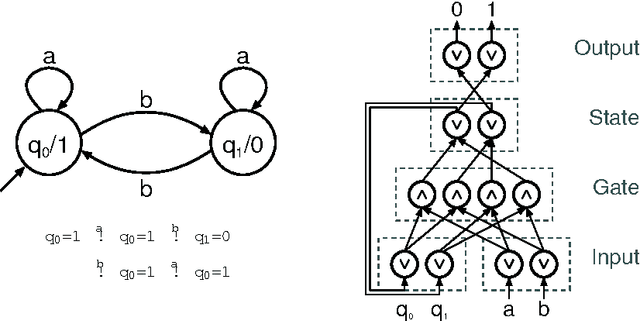

Abstract:Research on integrated neural-symbolic systems has made significant progress in the recent past. In particular the understanding of ways to deal with symbolic knowledge within connectionist systems (also called artificial neural networks) has reached a critical mass which enables the community to strive for applicable implementations and use cases. Recent work has covered a great variety of logics used in artificial intelligence and provides a multitude of techniques for dealing with them within the context of artificial neural networks. We present a comprehensive survey of the field of neural-symbolic integration, including a new classification of system according to their architectures and abilities.
The Integration of Connectionism and First-Order Knowledge Representation and Reasoning as a Challenge for Artificial Intelligence
Aug 31, 2004Abstract:Intelligent systems based on first-order logic on the one hand, and on artificial neural networks (also called connectionist systems) on the other, differ substantially. It would be very desirable to combine the robust neural networking machinery with symbolic knowledge representation and reasoning paradigms like logic programming in such a way that the strengths of either paradigm will be retained. Current state-of-the-art research, however, fails by far to achieve this ultimate goal. As one of the main obstacles to be overcome we perceive the question how symbolic knowledge can be encoded by means of connectionist systems: Satisfactory answers to this will naturally lead the way to knowledge extraction algorithms and to integrated neural-symbolic systems.
 Add to Chrome
Add to Chrome Add to Firefox
Add to Firefox Add to Edge
Add to Edge